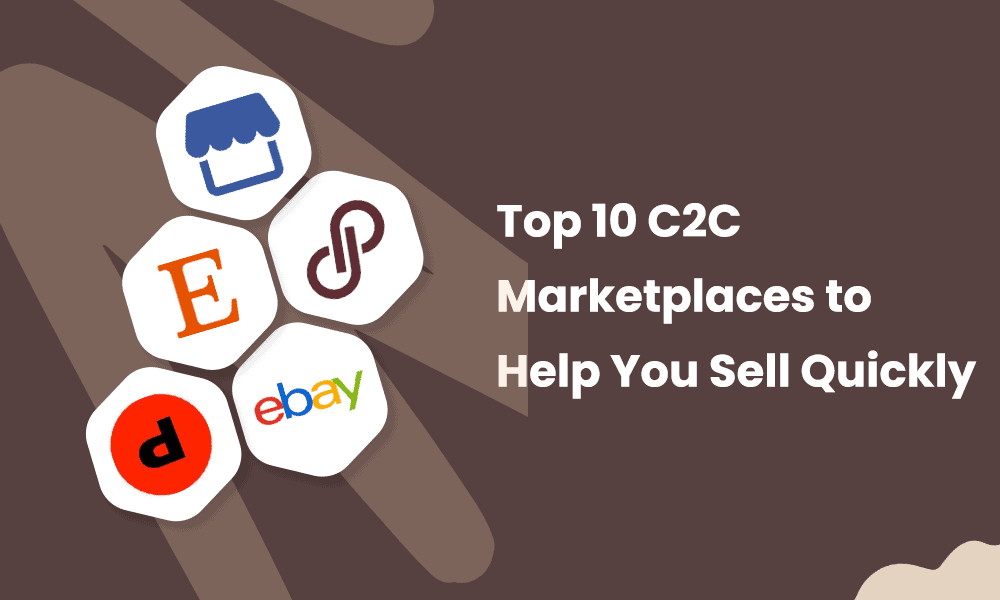Consumer-to-consumer or C2C eCommerce is a marketplace model where one consumer sells their wares privately to another.
Platforms like Facebook Marketplace or eBay facilitate the sale, but it can also occur directly over social media or email.
With the market value estimated at $2,061.22 billion in 2024 and projected to grow to $11,216.30 billion in 2032, C2C is a market worth attention. However, it doesn’t get the lion’s share of attention like B2B or B2C business models, likely because the consumer selling makes most of the profit, and this model doesn’t involve businesses as directly.
If you’re eager to learn more about C2C, including how the marketplace works and the trends that drive it, you’ve come to the right place. You’ll soon discover its growing importance in the global eCommerce sector.
In this blog post, we’ll take a look at 10 of the best C2C marketplaces, as well as trends, benefits, and case studies.
Let’s get started!
Table of Contents
Key Takeaways
- C2C eCommerce is growing quickly, with platforms like eBay, Vinted, Etsy, and Poshmark leading the pack.
- While challenges like dealing with returns and ensuring secure transactions must be addressed, benefits like low overhead costs and higher profits make the C2C marketplace worth exploring.
Understanding C2C Marketplaces
Before I get into the benefits, strategies, and challenges of C2C eCommerce, I want to ensure you’re entirely clear about how this business model works.
C2C takes place between consumers. Businesses can facilitate peer-to-peer sales through their platforms or websites. Still, they’re not involved much, unlike B2B and B2C eCommerce models, where the business selling the product to another business or consumer is heavily involved.
Another difference is who takes the profits. In a full C2C eCommerce model, the consumer could earn 100% of the profits or share a portion with the platform that allowed the sale. Compared to B2B and B2C, any corporation involved with C2C eCommerce makes substantially less money.
But C2C isn’t for the corporations. Sometimes, there’s no need for a middleman, as it depends on which C2C marketplace you select.
10 Top C2C Marketplaces
Here’s a rundown of the popular options and whether the consumer makes the entirety of the profits or shares with the third-party platform.
1. Facebook Marketplace
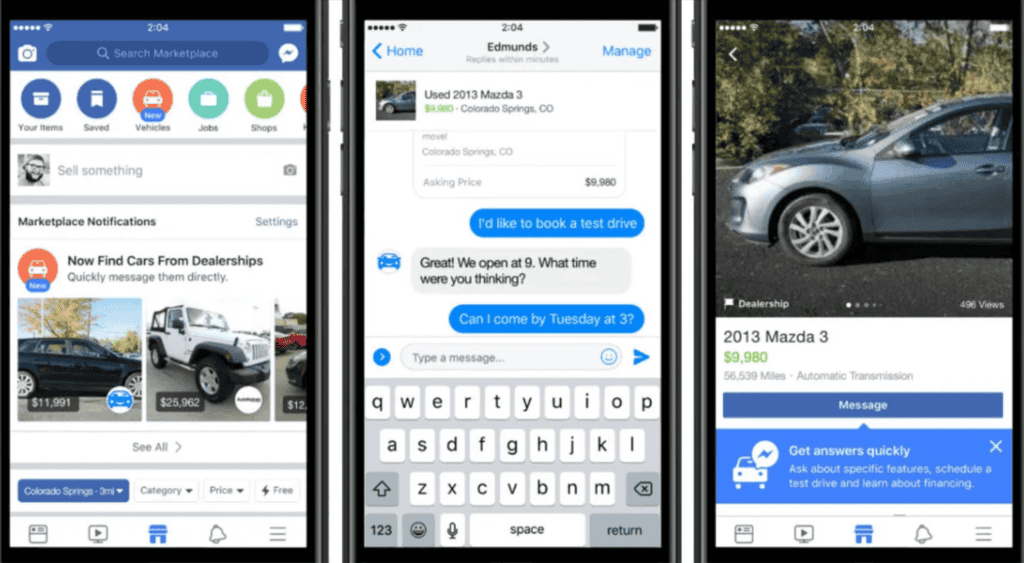
With 800 million monthly users, Facebook Marketplace is a huge platform for buying and selling. It’s free to use if you have a Facebook account. You can begin browsing all sorts of items, everything from used clothing to cars.
Selling on Facebook Marketplace requires paying a five-percent fee, with the lowest possible price of $0.40 per product for items listed at $8 or below.
2. Craigslist
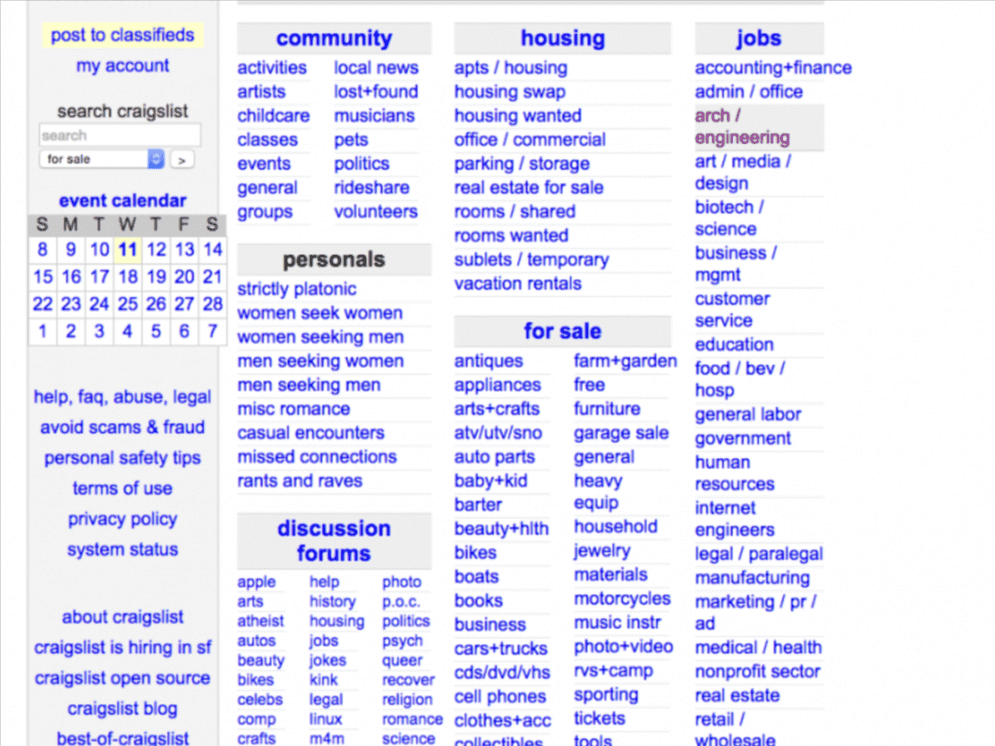
Since 1995, Craigslist has provided opportunities to connect with others over just about anything, from jobs to housing, services, and products. Although its site design hasn’t changed much, Craigslist still attracts 250+ million monthly users.
Posting anything but job ads on Craigslist is free.
3. eBay
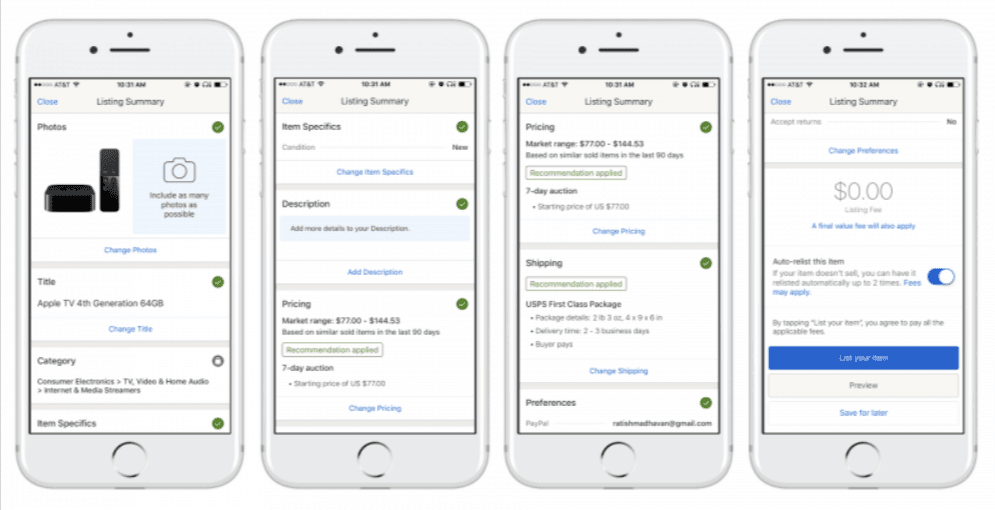
One of the greatest examples of a successful C2C marketplace is eBay, which has 135+ million users. You can sell everything on eBay, from chips resembling famous celebrities to collectibles, clothing, and convertibles.
What’s unique about eBay is that besides its option for users to buy items directly, they can also bid on some items. The bidding period counts down in real-time, and the highest bidder wins.
Bidding is an excellent way for sellers to maximize profits on an item, especially for something unique.
eBay allows you to list some items with a zero-insertion fee, so you don’t have to pay insertion fees for most listings. However, you only get 250 such zero-insertion fees a month. EBay still charges final value fees based on the item’s total amount and order fees.
4. Poshmark

Poshmark has 80 million global users, most of which are female. The platform is built to sell beauty products, home décor, and fashion items. If your product costs less than $15 to sell, Poshmark takes its cut at a rate of $2.95, a flat commission.
The Poshmark fee is 20% for items over $15.
5. Depop
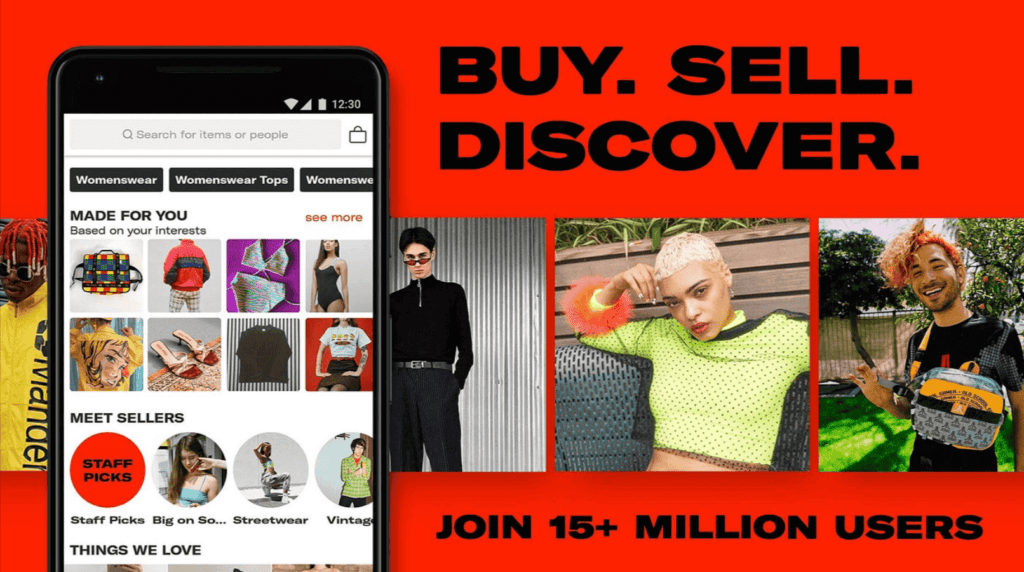
Another fashion-based C2C marketplace is Depop, which had 42 million users as of 2023. Depop charges a fee of 10% based on the total transaction amount, which is a factor in shipping.
6. Etsy
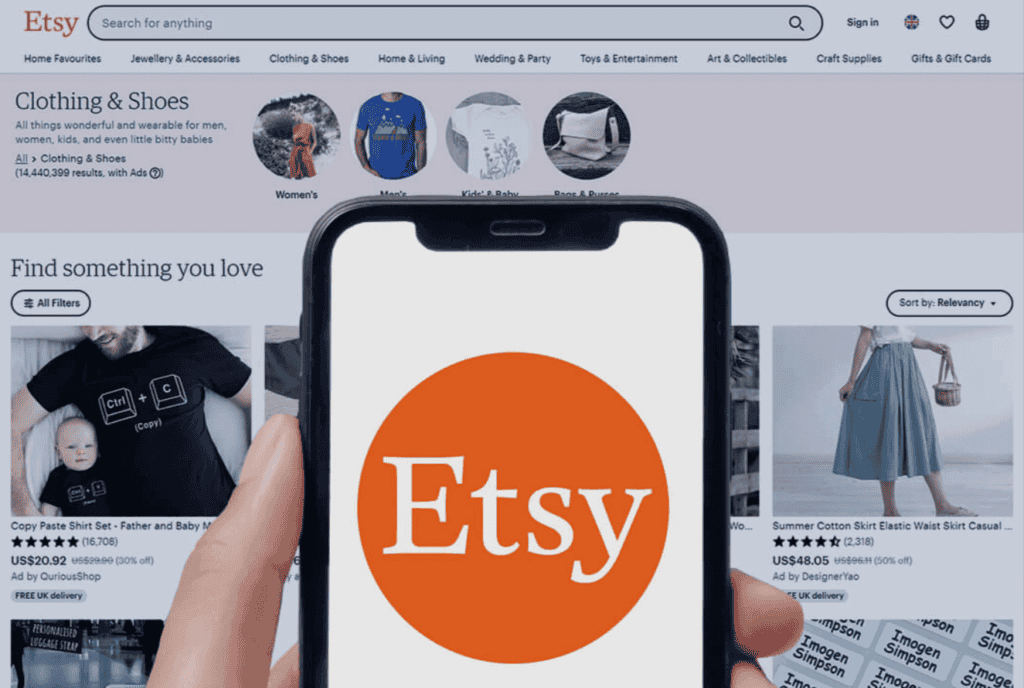
With over 410 million users on Etsy in February 2024 alone, it’s one of the largest C2C marketplaces. Founded in 2005, the primary purpose of Etsy is to sell handmade goods of all kinds, from fashion to soap, beauty products, cosplay items, you name it.
However, people also sometimes use Etsy to sell non-handmade products online in auctions in the same way they would an eBay or Facebook Marketplace.
Etsy charges an initial, one-time $15 setup fee, then listing fees of $0.20 every time you post. You also have to pay the same amount for auto-renewal. Additionally, Etsy has a transaction fee of 6.5% of your listed price, which includes shipping and gift wrapping.
7. Bonanza

With a market of more than 25,000 people selling their items, Bonanza has a huge collection of home décor items, collectibles, clothing, and everything in between. Like almost every other C2C marketplace, Bonanza charges fees.
First, an initial setup fee of $14.99 is a one-time, nonrefundable payment. You will also be on the hook for a $0.25 transaction fee per listing if you don’t have a membership subscription.
8. Decluttr
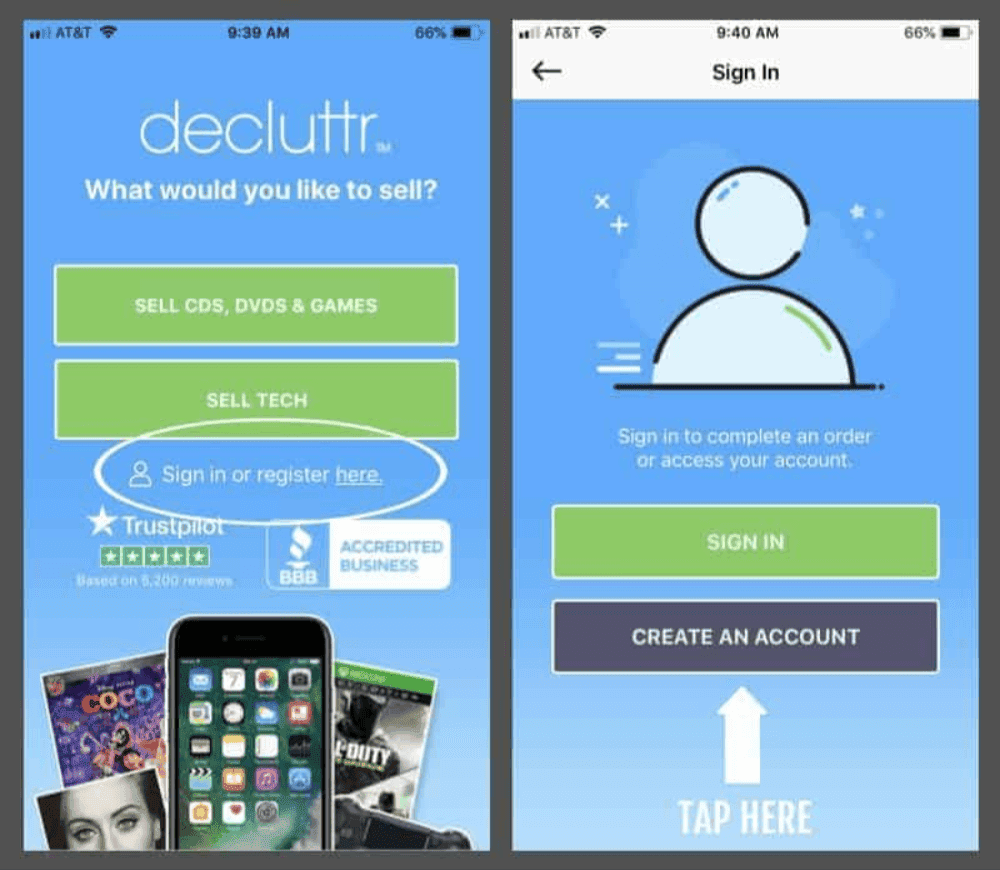
What about your tech items? That’s what Decluttr is for. It accepts video games, consoles, phones, tablets, Blu-rays, DVDs, and CDs, listing the items for sale. What also makes this C2C platform appealing is that it doesn’t charge fees to sell goods.
Better yet, you can get a fast product valuation before selling it, and it’s free!
9. VarageSale
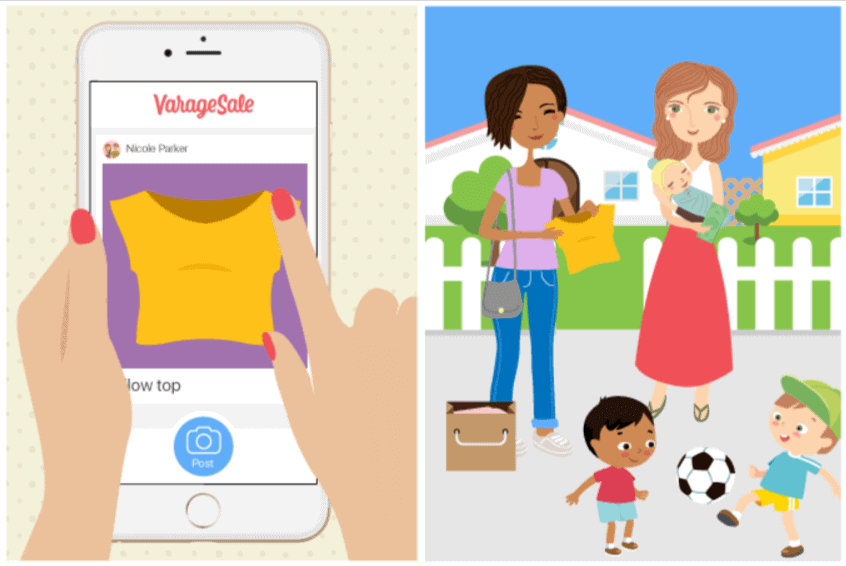
Garage sales may largely be a thing of the past, but their spirit lives online through VarageSale. This global garage sale resource is full of buyers and sellers and has users in parts of the world, such as the UK, United States, Japan, Canada, Italy, Germany, and Australia.
Like Decluttr, VarageSale doesn’t charge you fees for listing and selling items.
10. Nextdoor
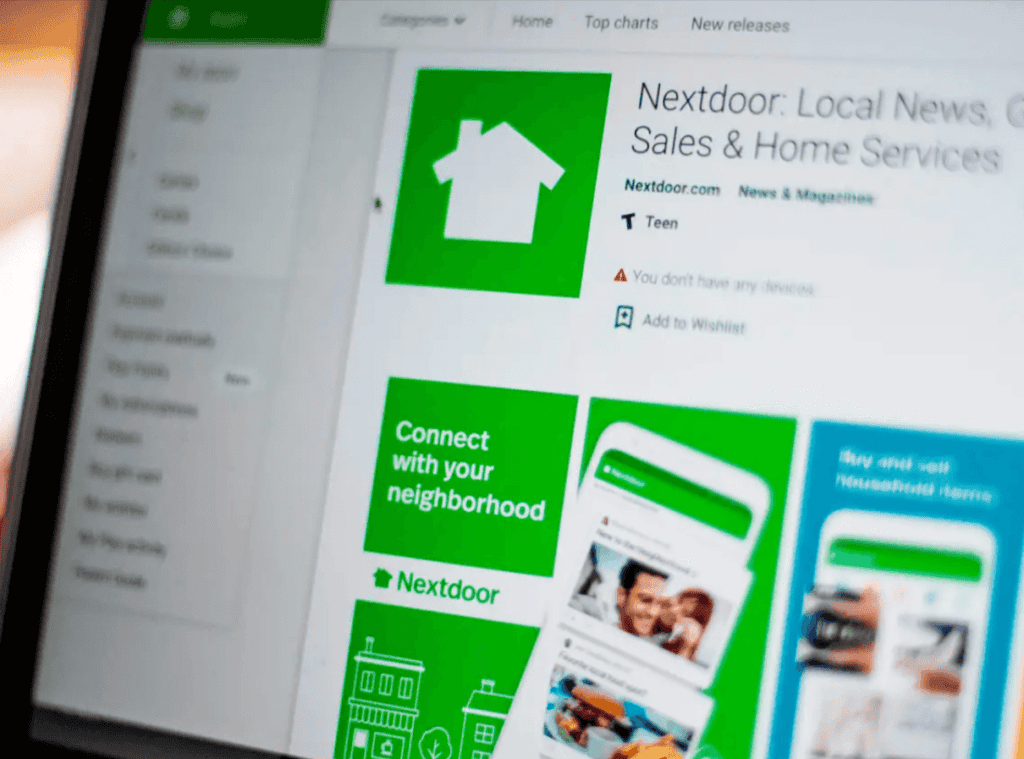
Connect with your neighborhood on Nextdoor, a community portal with eCommerce components. It’s free to use for individuals and neighborhoods and doesn’t charge you unless you create ads on the platform.
Read also: B2B eCommerce Trends — These Strategies Can Boost Your Business
Key Trends in C2C Marketplaces
Now that you better grasp the facets of the C2C eCommerce universe, let’s examine the trends driving innovation in this marketplace.
Global reach and cross-border trade
One of the coolest parts of C2C eCommerce is how it’s broadened the horizons for sellers worldwide. If you wanted to sell your products to someone else, you had to have a yard sale or post a listing in the newspaper to attract people from other communities.
The internet has broken down those barriers. You no longer need to sell to those in the same state as you are, customer to customer, let alone the same community. You can sell your products worldwide, facilitating trades and purchases across borders.
The benefits of global reach are multiple. Buyers have a greater chance of finding what they’re looking for, as they’re not limited to their region. Sellers can increase their profits by getting buyers from anywhere and everywhere, including the far reaches of the earth.
The only downside is the higher shipping fees, which sellers may pay out of pocket depending on the C2C marketplace selected.
Sustainability focus
In my post on B2C trends, I discussed the rise of sustainability in eCommerce. Unsurprisingly, this trend has extended to C2C eCommerce as well.
After all, more than 80% of Americans are cognizant of the threat of global warming, and more than 90% in the UK.
People care more about the environment than many of us realize. Since you don’t always produce goods in a C2C marketplace, you don’t get as much quality control over your products, but you do have a say in the packaging you use.
As often as possible, seek eco-friendly packaging materials, like recycled boxes. Minimize shipping distances if possible, or select the shipping method that harms the environment the least to keep your C2C carbon footprint small.
Seek sustainable materials and practices if you make products, like homemade goods, on Etsy.
Technological advancements
Isn’t technology grand? It’s taken us so far as a society and continues to do so, and it can propel a C2C marketplace forward in innovative ways.
For example, there’s artificial intelligence. You can think of AI as a virtual assistant that you don’t have to pay. Since you don’t necessarily come from a business background, you might need help writing your product descriptions in a way that grabs attention. AI can do it.
Do you need to send a follow-up email on a late payment? AI can do it. Do you want to share your new product listing on social media and write a snappy caption? You get the drill by now. AI can do it.
Besides AI, there’s AR or augmented reality.
I discussed the concept in my B2C trends piece, but essentially, AR combines real life with 3D elements. The reason it’s caught on so much in eCommerce because consumers can “try on” items virtually, from home décor pieces to clothing, shoes, glasses, and hats.
With an exclusively online C2C marketplace, AR can drive more sales as people realize the quality and charm of your items for sale.
Read also: 3 Best Online Marketplaces to Kickstart Your Business
Benefits of C2C Marketplaces
The C2C eCommerce marketplace continues to snowball and achieve rapid growth. As these advantages prove, there’s never a better time to enter the market than now.
Access to a wider audience
You already know that the power of the internet eliminates the borders between you and potential customers that used to hem you into local communities only. You can expand internationally in very short order, gaining a global following.
Along the way, you’ll learn many valuable lessons about worldwide eCommerce, including laws and regulations, shipping options, data privacy, and customs. You can apply these lessons to your marketplace as you get the urge to grow.
Lower operational costs
I went over the fees for some of the biggest C2C marketplaces around. While setting up an eCommerce store is rarely free, the associated fees aren’t outrageous, making it more achievable to enter the market.
You don’t have to keep a physical storefront, which will save you thousands, if not tens of thousands of dollars, and you don’t need to create and pay for your own website, either (unless you want to!). The only area where you can spend just as much as any B2B or B2C business is advertising and marketing.
Convenience
If you have items that others find valuable, a smartphone to take pictures, and an internet connection, congrats, you have what it takes to start a C2C eCommerce store. The convenience factor is off the charts, and considering how low it is to get started, the barrier to entry is reduced even further.
Of course, the convenience factor can be a bit of a double-edged sword. I’ll talk momentarily about C2C challenges, but the easier it is for people to do it, the more people will flood C2C marketplaces.
High profits
Business payments are tricky because there are a lot of people involved who get their cut. In the C2C sector, it’s just you and the platform you use. In the case of platforms like Nextdoor or VarageSale, you don’t pay a thing to sell.
Even bigger platforms like Poshmark only take 20%, leaving you with 80% of the profits.
You can make a killing if you find a type of product people want and have a lot of it to sell.
Read also: How to Sell on Facebook Marketplace — Steps, Tips, and Lessons
Challenges and Solutions
Being successful in C2C eCommerce requires understanding the issues that can arise and having solutions ready. Here are the most common challenges.
Trust and security issues
Since you’re not a business-to-consumer one, per se, it can be more difficult to build trust with potential customers. This might cause them to pass you by and seek another service.
If you’re running a C2C eCommerce store where you sell products you create, you should strive to do basic branding, such as creating a logo and selecting a color scheme. If you only sell secondhand items, you can at least establish yourself by writing a bio or introduction.
Mention how long you’ve sold products online and how many happy customers you have. If you have a few positive reviews, share at least one. Nothing builds trust faster than social proof.
As for security issues, those are unfortunately not always in your control when you put your trust in a third-party C2C eCommerce platform or marketplaces like Etsy, eBay, or VarageSale. All I can recommend here is to research your options carefully and select a platform that takes privacy and security seriously.
High levels of competition
This goes back to my point from before. Since it’s easy for almost anyone to start a C2C eCommerce store, there tends to be a lot more competition.
Understanding your brand and the value of your items, especially if they’re one-of-a-kind homemade pieces, will help you establish a foothold over your competition.
Handling returns and logistics
Hopefully, returns are few and far between, but at least some people will inevitably want to return their orders because they didn’t fit or aren’t the right color. As a C2C seller, returns can be difficult on your own, so I suggest partnering with a third-party fulfillment provider.
They can receive and process returns, including shipping the item back to you and initiating a replacement (if the customer wants one).
Read also: 12 Powerful Sales Growth Strategies for 2024 (+ Calculations)
Strategies for Success in C2C Marketplaces
You’ve had a taste of success within the C2C online marketplace now, and you’ve got to admit you want a lot more.
I hear you! The following strategies will help you supercharge your eCommerce aspirations.
Use marketing to build engagement
Marketing is your best friend as a growing C2C seller. Since you’re not necessarily a business, your marketing measures will differ from those you might otherwise be used to.
For instance, I recommend focusing heavily on social media. Create Business Pages for your online shop, invite your personal friends and colleagues to follow the page, and work on building more followers by promoting your social pages on your storefront.
Once you get followers, it’s your job to keep them engaged. The best way to do that on social media is to post consistently so your name stays atop their feeds. Share content you find genuinely interesting, considering your target audience.
User-generated content is another marketing tactic for your C2C eCommerce presence. UGC comes exclusively from your customers, who will share photos and videos using your products because they love them that much.
Request their permission to share the content on your website and social media, and you could see more sales crop up!
Provide excellent customer support
You have to be business-minded as a C2C. Even if you work with a third party to take care of it, someone must be available to answer customer queries, handle returns, provide order information and shipping notifications, and generally provide assistance.
Use your profits to pay for advertising
Have you accrued some healthy profits as a C2C? That’s excellent! Take some of them and funnel them into growing even more. Many C2C platforms offer their own advertising systems, and although you’ll have to pay extra to access them, they can help you grow.
Another option is pay-per-click advertising or PPC. With this form of advertising, you can post displays and other types of ads on the internet through the help of a publisher. You pay the publisher a few cents for every click, keeping costs down.
Social media advertising is yet a third avenue to consider. However, the three are the most expensive, as these platforms offer full-fledged advertising and marketing campaigns.
Review the numbers
As you grow, you’ll begin seeing metrics you must pay attention to. For instance, how much traffic does your store get? Do people spend a long time on your page or bounce quickly? How many leads do you convert?
Answering these questions will help you learn what’s working and what isn’t. It’s okay if you don’t knock it out of the park the first time. You’re on the right track as long as you’re learning from your mistakes and striving to improve.
Read also: 16 Powerful Customer Retention Strategies to Stop Customer Churn
Case Studies
While your road to success might look different, I think it always helps to look at other businesses in your industry to see what they’ve done.
You can’t go wrong with studying eBay’s moves, and Vinted is another sales platform in the same vein as Poshmark and Depop with a lot to learn from.
eBay
Amassing an active buyer count of 132 million people, eBay even found a way to thrive during the COVID-19 pandemic of 2020, where its net worth grew. That growth continued in 2021.
So, what does eBay do right? Embracing mobile shopping has served eBay well, as it has had an app since 2008. That was well before the competition considered following suit. As of 2022, eBay’s app has over 10 million downloads in the US and over two million in Germany and the UK.
Vinted
Speaking of shopping apps, Vinted is another brand that has jumped on the app bandwagon. It’s within the top five shopping apps in the UK, Poland, the Netherlands, Germany, and France.
Vinted has built its popularity due to its free listings, easy-to-post products, and not taking the seller’s cut of the payments.
Conclusion
Leveraging C2C marketplaces can provide a revenue model with many potential benefits, including cost-effectiveness, wide reach, and a larger cut of profits. However, getting to that point requires strategic approaches and innovative practices to help you stay competitive in a crowded market.
EngageBay is an all-in-one marketing, sales, and customer support software for small businesses, startups, and solopreneurs. You get email marketing, marketing automation, landing page and email templates, segmentation and personalization, sales pipelines, live chat, and more.
Sign up for free with EngageBay or book a demo with our experts.
Frequently Asked Questions (FAQ)
1. What is a C2C marketplace?
A C2C marketplace deals with transactions between two consumers, such as selling your used clothes on Poshmark or posting your DVD collection for sale on eBay.
2. How can small businesses benefit from C2C marketplaces?
C2C marketplaces are largely cost-effective, so startups on an ultra-tight budget with a small stock of products should find themselves right at home.
3. What are the main challenges faced by sellers on C2C platforms?
A crowded marketplace and the need to brand oneself are primary challenges, as is the difficulty of dealing with returns. However, all these problems have solutions.
4. How can I ensure the security of transactions on my C2C platform?
Choosing platforms with secure payments, fast dispute resolution, and verification processes will instill confidence in your fellow consumers when shopping.
5. What strategies can increase sales in a C2C marketplace?
Consider a contest or giveaway to boost other consumers’ interest and generate excitement around your products, which will result in more sales.
